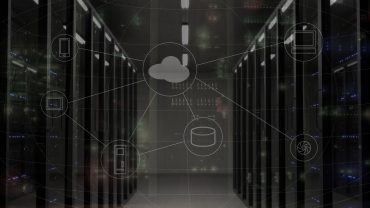
Smart cities based on sustainable, resilient infrastructures enable structures, services, and technology frameworks to work together opening up limitless possibilities.
Smart cities aren’t just some fantasies you see in movies. They exist in plain sight and are projected to expand rapidly with advancements in edge computing, data center infrastructure management (DCIM), and back-UPS. In fact, smart city initiative spending is predicted to go up from 124 billion in 2020 to 189.5 billion by 2023. According to the 2020 IESE Cities in Motion Index, which utilizes key indicators including economy, governance, urban planning, and technology, London is already on top, with New York at a close second.
Data acquired from that information is then utilized to oversee and regulate resources, assets, and administrations effectively. This incorporates information gathered from residents, gadgets, structures, and resources that are then prepared and dissected to screen and oversee traffic and transportation frameworks, power plants, utilities, water supply organizations, etc.
When the technology works and smart cities are run on data, they are both more efficient and increase individuals’ quality of life. For Smart Cities to improve quality of living, they require significant planning and must be equipped with a complex mix of IT resources that support infrastructure across a wide geographic area.
Why Are We Just Focused on Big Cities (For Now)?
Cities only cover around 3% of the Earth’s land, yet they produce around 72% of its total greenhouse gas emissions. In addition, cities are rapidly growing and will continue to be major centers of emissions despite the impact of COVID-19. Consequently, decarbonizing large population centers delivers impact at scale. In the fight against climate change, our biggest battles must be fought in cities.
Creating Sustainable IoT Infrastructure to Last
A sustainable infrastructure must be the basic building block of any smart city. When structures, service, and technology frameworks cooperate together, the possibilities are limitless. Urban areas characterize a civilization, and smart cities can make life much easier and improve overall growth. Thus, the Internet of Things (IoT) will continue to play a critical role in an environment that empowers efficiency and supports citizens – regardless of whether it be a place of business, hospital, or a college.
See also: Smart Offices Are Closer Than They Appear
Buildings are the Backbone of Any Smart City
A holistic building management system is key to a smart building strategy. The struggles of integrating multiple technologies within a building are well-known to both service providers and consumers alike.
In a city scenario, these challenges are only going to present on a larger scale. Concerns such as cybersecurity and data protection are more complex to solve at a city level and with a lot more at stake. While IoT platforms for smart cities have already been presented in the industry, it is unquestionable that today’s infrastructure – both physical and digital – is not prepared for it. A viable solution is to ensure strong, thorough policies for these individual systems, bearing in mind their cooperation with other systems. For this, there is an urgent need for educated policy-makers with multi-system knowledge to ensure the execution of ideas.
We can connect, collect, and monitor data from our buildings and their system components remotely. In doing so, we can use smart analytics to identify inefficiencies or issues with their operations. Not only can this insight help to reduce our carbon emissions, but also to increase the building resiliency by protecting their critical assets and avoiding operational losses through unplanned downtime.
Furthermore, occupancy and environmental sensors can inform the way we use spaces. We can analyze usage patterns, which can lead to the improved use of a building with safer and more efficient layouts. Meanwhile, they can ensure comfortable and healthy conditions and that buildings are well ventilated. With the right approach, intelligent digital systems in buildings can meet the needs of the planet and people.
See also: The Need for a Smart City Nervous System
Edge Computing Enhances Key Services
While cloud computing drove the creation of mega data centers, edge computing brings distributed IT with an exponential number of micro data centers. Gartner defines edge computing as “…part of a distributed computing topology where information processing is located close to the edge, where things and people produce or consume that information.”
Deploying at the edge can be a difficult challenge, but with the right integrated systems, next-generation DCIM, and integrated ecosystem of partners, deployment can be more efficient and lead to greater resilience for smart cities relying on key functions like emergency services.
Grid Also Plays a Crucial Role
If there is one driver that is only going to become more central to the story, that is electricity. The future relies on our ability to provide resilient electricity to the infrastructure within the smart city. The grid is the backbone of the smart city, and this backbone needs to be flexible. The grid’s ability to respond actively to surges in energy demand and supply will be a key enabler to realizing our smart city vision. However, this also remains one of our biggest challenges to date, particularly with the increasing amount of technology-reliant on electricity.
It is crucial that we continue strengthening our grid infrastructure to be able to adapt these technologies at a faster pace. Condition-based monitoring systems can lead to self-healing designs, which will enable the modernization of the power system to an automated microgrid. Furthermore, smart grids will enable consumers to gain access to their energy data. This promotes them to autonomously make decisions on their energy consumption.
Smart Cities Are Coming, Let’s Build it Right
The smart city vision is far from unreal, yet far enough to make the right strategic decisions to carry out a resilient infrastructure. Smart buildings and smart grids hold the key to making this happen. The quickest win in this journey is the strengthening of our grid, deploying state-of-the-art edge computing, enabling a dynamic, intelligent, automated power system. At the same time, collecting and analyzing data from our buildings – and more importantly – converting those analytics into actionable insights will help shape truly smart buildings.
Like the grid, condition-based monitoring of building management systems can pave the path towards self-healing buildings, augmented by technologies such as artificial intelligence, service automation, and workforce scheduling. The journey to smart cities is going to be a challenge – a challenge that can be easily overcome by strengthening the infrastructure at play.





























